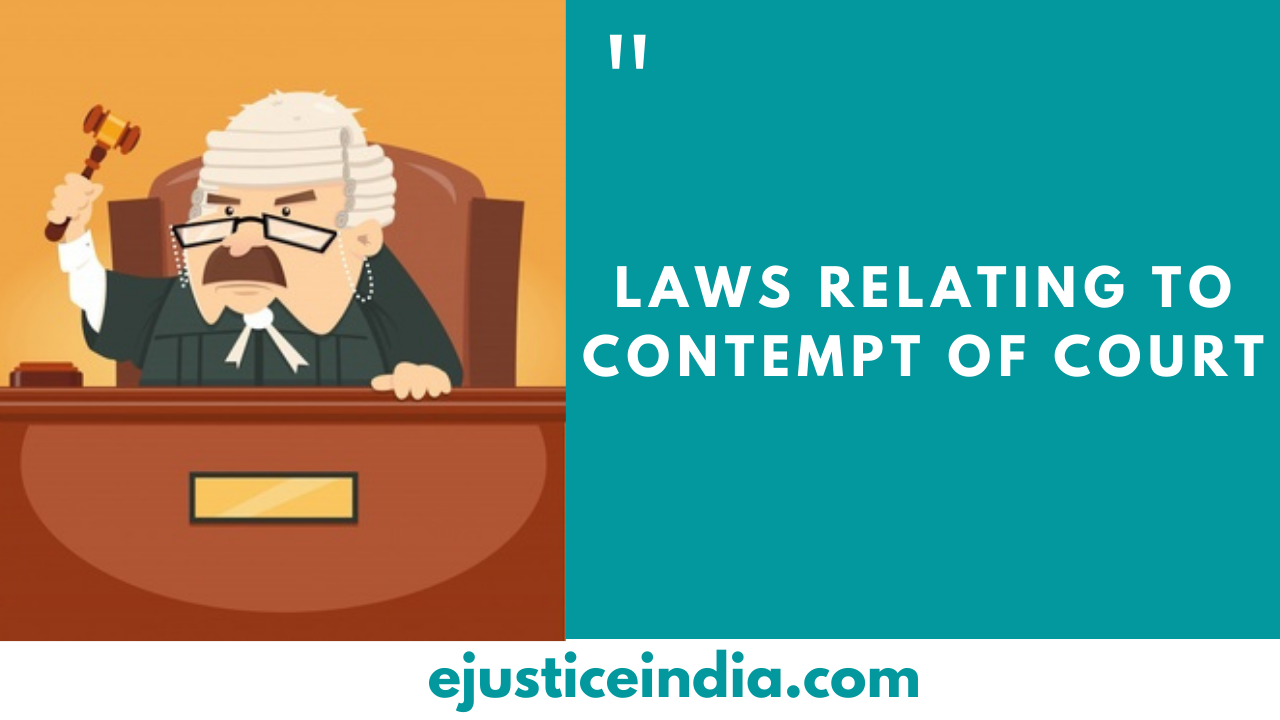TORT FOR SEXUAL HARASSMENT
Author : Bhoomi Gupta
The term ‘tort’ is derived from the Latin phrase ‘tortum’ which means to twist and implies conduct which is twisted or tortious. Sexual harassment is an unwelcome behaviour whether directly or indirectly and violence against the victim. It is immoral and illegal to harass any person based on sex. Sexual Harassment is defined as unwelcome and uninvited sexual advances, requests for sexual favours, sexually coloured remarks, and other verbal or physical conduct of a sexual nature. In other words, if persons make unwanted actions that are sexual, through any gesture, verbally, physically or in writing makes another person uncomfortable is a harasser. The harasser can be either a man or a woman and the victim and harasser can be the same sex.
Examples
Verbal
- Whistling at someone
- Making sexual comments about a person’s body, clothing or looks
- Making sexual comments or innuendos
- Turning work discussions to sexual topics
- Speaking and sharing sexual jokes or stories
- Spreading rumours or lies about a person’s
- Catcalls
- Unwanted letters, telephone calls, or materials of a sexual nature
Physical
- Touching the person’s clothes, hair, or body parts
- Hugging, kissing, spanking, patting, or stroking
- Touching, massaging or rubbing oneself sexually around another person
- Standing close, pinching, cornering or brushing up against another person
Non-verbal
- Staring a person up and down (Elevator eyes)
- Blocking a person’s route
- Staking the person
- Displaying sexually suggestive visuals
- Making sexual gestures with hands or through body movements
- Winking, throwing kisses, howling or licking lips
Impact of sexual harassment
The consequences of Sexual harassment are dreadful and harmful. It disturbed harassed person physically, emotionally and mentally. It not only a violation of one’s rights but also hinders opportunities for economic advancement and social development. The damage caused is immeasurable as damage extends to physiological, physical, emotional, societal, and economical
In the matter of Skousen v. Nidy, 90 Ariz. 215, 367 P.2d 248 (1961), was one of the first cases in which court considers the notion that sexual harassment was unlawful not because it diminished a woman’s “value,” but rather because it harmed her physically, mentally, and economically.
Some of the negative impacts of sexual harassment are
- Depression and trauma
- Anxiety and stress
- Lack of concentration
- Lower self-esteem
- Feeling shunned and boycotted
- Remains anxious, upset and distant
- Unable to make communication in the workplace
- Develops insecurity
- Insomnia
- Eating disorders
- Obstruct work performance
- Numbness
- Issues related to job consequences
- Betrayed /Lost
- Disturbed relations with colleagues
- Trust issues
Forms of sexual harassment
There are two forms of sexual harassment at workplace namely:
- Quid pro quo Harassment
- Hostile work environment
Quid pro quo Harassment
The term ‘quid pro quo’ is the Latin phrase which means “this for that”. Quid pro quo is a form of sexual harassment where a person who has the power or at the higher position such as which a boss, manager, supervisor, professor, request sexual favours from a person in exchange for employment, academic benefits or any other benefit.
Hostile work environment
The hostile work environment is an environment created by the boss or coworkers whose activities, conduct or communication adversely distresses the person’s ability to do his job or any other work. Such a work environment is humiliating and disturbing which badly impacts the person mental and emotional wellbeing.
In Vinson v. Taylor, 753 F.2d 141 (D.C. Cir. 1985) the plaintiff was a bank teller-trainee. She claimed that her supervisor, a vice-president of the bank, had forced her to have sexual relations with him. In addition to demanding sexual favours, the supervisor frequently caressed the trainee and exposed himself to her. The bank ultimately discharged the plaintiff for excessive use of sick leave. Although the district court dismissed Vinson’s claim, the court held that the bank would be liable for the hostile work environment created by the supervisor’s conduct. The bank’s liability would not be affected by the fact that the bank’s higher management did not know about the supervisor’s behaviour.
In Vidya Akhave v. Union of India, Writ Petition No. 796 of 2015 the Bombay High Court observed that it is the responsibility of an employer to take preventive action regarding the unwelcome or offensive sexual act.
Sexual Harassment and the Law of Tort
The concept of sexual harassment and the law of tort is ancient. Historically, unwanted sexual touching considered tortious as the battery, assault, or infliction of emotional distress
1. Assault
The tort of assault is defined as sexual contact characterized by the use of force, an attempt or threat to do a corporeal hurt to the victim, abuse of power, coupled with an apparent present ability and intention to do the act. The scope of the tort of assault is wider than the tort of the battery as the victim can bring the cause of action for mere apprehension, agony, shock and humiliation produced by the threat with or without physical contact.
To prima facie constitute this wrong, two essentials are necessary:
a) The actor intended to cause harmful or offensive physical contact.
b) The victim was put into apprehension by the conduct.
The exception of sexual harassment as assault is verbal abuse therefore; no action of assault is created in case of verbal harassment.
2. Battery
A battery is an intentional and direct use of harmful offensive physical contact on another person. To constitute the liability of accused the victim requires showing that the accused had intentionally offensively touched the victim and it is not necessary to show that harm is caused.
A battery consists of the actual, abusive or unpleasant touching another person by the accused in an inappropriate, violent, vengeful or an insolent manner.
The victim may bring the action under of both assaults as well as battery whenever he or she frequently goes through an apprehension of unwelcome physical touch accompanied by the actual contact.
In the case of Skousen v. Nidy Ariz, 215, 367 P.2d 248 (1961) a 65 years old caretaker in a trailer park filed a suit against her employer for assault and battery. She claimed that the park owner frequently had attempted to seduce her by sexually touching her and, on several junctures have assaulted her violently. The Arizona Supreme Court recognizes the necessity to deliver relief for both the mental and physical consequences of the accused misconduct, upheld an award of compensatory and punitive damages.
3. False Imprisonment
The tort of false imprisonment is referred to the total or complete restraint of the liberty of a person, for a short time without any lawful excuse.
To establish liability for sexual harassment under this wrong the two prerequisites are:
- There must be total restraint of the liberty of a person which may be the actual use of physical force or constructive use of authority and power.
- The detention must be unlawful.
4. Intrusion
The tort of intrusion refers to an intentional encroachment or invasion of the personal privacy of another person without his or her authorization. To constitute the liability for sexual harassment under this wrong the prerequisites are:
- The accused shall have intentionally invaded the private affairs of the victim without his or her consent
- The invasion shall be offensive to a reasonable person
- The matter that the accused intruded upon must involve a private matter
- The intrusion have caused mental anguish or suffering to the victim
In the case of Phillips v. Smalley Maintenance Services, 526 F. Supp. 523 (D.D.C. 1981) the court observed that the employer’s constant interrogations about his employee’s sex life and frequent demands for sexual favour have caused the woman to suffer from chronic anxiety, to contemplate suicide, and to require counselling and medication. The court decided that the victim is suffering is due to intrusive invasion of privacy by the employer. Therefore, the court upheld an award of compensatory damages for the woman’s medical costs, as well as for her mental torment.
5. Intentional Infliction of emotional distress
In this tort, a person deliberately caused severe emotional distress to another person. A claim for intentional infliction of emotional distress requires the victim to prima facie established four prerequisites:
- The defendant must act intentionally or recklessly
- The defendant’s conduct must be extreme and outrageous
- The defendant intentionally or purposely has caused the victim emotional distress
- The defendant conduct has caused severe emotional distress so severe that adversely affects the mental health of the victim
In Bennett v. Furr’s Cafeterias, 549 F. Supp. 887 (D. Colo. 1982) the victim of institute suit against her employer for harassment violations, assault, battery, and infliction of emotional distress. The victim alleged that on several occasions her supervisor had made unwanted sexual advances and physically assaulted her during business trips. The court upheld victim claim and award damages.
In the matter of Howard University v. Best, 484 A.2d 958 (D.C. 1984) the female professor claimed that the male dean’s sexual advances and deliberate creation of a hostile work environment had resulted in her termination of employment. The accused intentional action had caused her to develop hypertension therefore, she required counselling. The Court of Appeals observed that outrageous conduct of the dean was violated public policy and therefore, upheld the plaintiff’s tort claim.
Comment
Society is not static this also reflects in law. Law shall be developing according to the change and need of society. The principle of law shall not be based on outdated theories but it should adopt new principles, theories and codes. There are several problems in establishing the tort of sexual harassment. Although tort seems to be an effective method of remedy in the form of compensation it does not compensate for the agony, distress, humiliation and suffering of the victim. The tort needs to gradually develop with time and necessity.
References
- RatanlalRanchhoddas and Dhirajlal Keshavlal Thakore, The Law of Torts, 26th Edition
- B.D. Singh, Issue of Sexual Harassment- A legal perspective
- Timothy B. Broderick and Katrina Telfer Saleen, A Victims Guide to Sexual Harassment, Broderick Law Firm
- Krista J. Schoenheider, A theory of tort liability for sexual harassment in the workplace, https://www.scribd.com/document/322871814/A-Theory-of-Tort-Liability-for-Sexual-Harassment-in-the-Workplace (Last visited on August 24, 2020)
- What is sexual harassment, https://www.un.org/womenwatch/osagi/pdf/whatissh.pdf (Last visited on August 24, 2020)
- Skousen v. Nidy, 90 Ariz. 215, 367 P.2d 248 (1961),
- Vidya Akhave v. Union of India, Writ Petition No. 796 of 2015
- Vinson v. Taylor, 753 F.2d 141 (D.C. Cir. 1985)
- Phillips v. Smalley Maintenance Services, 526 F. Supp. 523 (D.D.C. 1981)
- Bennett v. Furr’s Cafeterias, 549 F. Supp. 887 (D. Colo. 1982)
- Howard University v. Best, 484 A.2d 958 (D.C. 1984)


